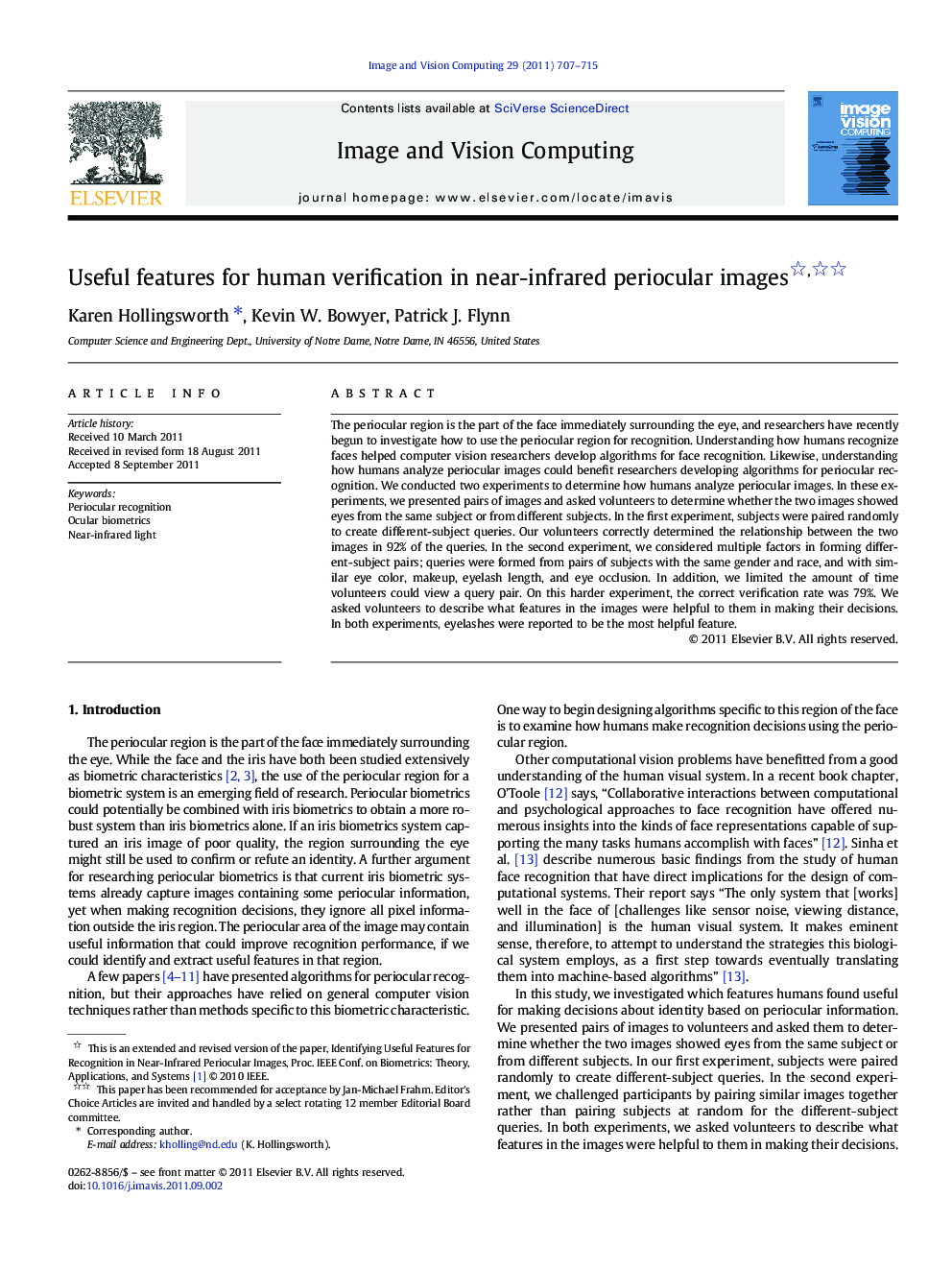| Article ID | Journal | Published Year | Pages | File Type |
|---|---|---|---|---|
| 526799 | Image and Vision Computing | 2011 | 9 Pages |
The periocular region is the part of the face immediately surrounding the eye, and researchers have recently begun to investigate how to use the periocular region for recognition. Understanding how humans recognize faces helped computer vision researchers develop algorithms for face recognition. Likewise, understanding how humans analyze periocular images could benefit researchers developing algorithms for periocular recognition. We conducted two experiments to determine how humans analyze periocular images. In these experiments, we presented pairs of images and asked volunteers to determine whether the two images showed eyes from the same subject or from different subjects. In the first experiment, subjects were paired randomly to create different-subject queries. Our volunteers correctly determined the relationship between the two images in 92% of the queries. In the second experiment, we considered multiple factors in forming different-subject pairs; queries were formed from pairs of subjects with the same gender and race, and with similar eye color, makeup, eyelash length, and eye occlusion. In addition, we limited the amount of time volunteers could view a query pair. On this harder experiment, the correct verification rate was 79%. We asked volunteers to describe what features in the images were helpful to them in making their decisions. In both experiments, eyelashes were reported to be the most helpful feature.
Graphical abstractFigure optionsDownload full-size imageDownload high-quality image (144 K)Download as PowerPoint slideHighlights► We present the first research on human perception of near‐infrared periocular images. ► Volunteers viewed pairs of images and decided whether they came from the same person. ► Given unlimited time, volunteers correctly analyzed 92% of queries. ► With limited time and difficult pairs, volunteers correctly analyzed 79% of queries. ► Eyelashes, tear ducts, eyelids, and eye shape helped most for identification.
